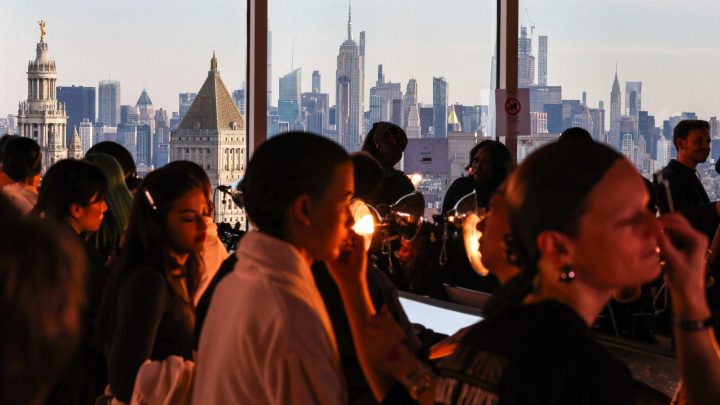
Behind the catwalk: how models are recruited and signed to exploitative contracts
Behind the catwalk: how models are recruited and signed to exploitative contracts

Marketplace Morning Report’s ongoing Econ Extra Credit series, where we watch a documentary a month with Marketplace themes, is back. This month, we decided to explore the film “Invisible Beauty,” which is about fashion icon and activist Bethann Hardison. We’ll have more on Hardison and her work later this month.
As we continue to pull back the curtain on this seemingly glamorous industry, we’re quickly learning that not everything is as it seems. Tatiana Siegel is executive editor of film and media at Variety, where she’s been exploring labor conditions in the industry. She recently spoke with “Marketplace Morning Report” host David Brancaccio. Below is an edited transcript of their conversation.
David Brancaccio: You’ve found people who’ve described some of the contracts that models work under as, I think the word here is “suffocating?”
Tatiana Siegel: “Suffocating.” “Exploitative.” “Opaque.” A lot of models are unable and have no recourse to see the contracts that they’ve signed. For a lot of models, English is not their first language, and they’re signing contracts that are in English. So yeah, the whole thing is pretty egregious.
Brancaccio: I guess I’m just naive. I was not prepared to read your accounts of some of the recruitment methods that you’ve found used by some modeling agencies give us a sense.
Siegel: I’ve heard of modeling agencies recruiting in refugee camps and outside of eating disorder clinics. So that is quite eye-opening.
Brancaccio: To say the least — and shocking. So New York is the center of this industry, I think it’s fair to say. There’s proposed legislation that has not yet been enacted, I think it’s called the New York Fashion Act and the Fashion Workers Act. Give me a sense of what the initiative is there.
Siegel: Basically New York has this unique carveout where modeling agencies don’t have to operate in the same way that any other employer does in New York. The Model Alliance, which is an advocacy group, has fought for this legislation called the Fashion Workers Act, that they were able to get through the Senate last year in New York, but it never got voted on in the assembly even though it has bipartisan support. So, they have re-updated the language to include AI protections, because that’s something that played out last year with the SAG-AFTRA strike and is becoming an increasing concern. So, they got in this new language, and they’re ready to reintroduce it.
Brancaccio: Now, let’s stay on the potential and challenges of artificial intelligence for people working in the modeling industry. You’ve talked to people who remember that their agencies have electronically scanned their bodies for what purpose, do you think?
Siegel: No one knows. No one can really articulate what has been done with these scans, but it’s alarming. We’re already seeing the use of AI models. I think Gucci and Levi’s have used campaigns that feature AI creations. It’s not some science fiction possibility. It’s happening.

Brancaccio: You wrote about that Levi’s campaign, am I right? They had computer-generated, like avatars that look like models. In some cases, they didn’t hire a Black model, they constructed one electronically.
Siegel: They touted it. They weren’t even hiding behind you know that they did this. They were touting this as like this is a great step in sort of diversifying our modeling campaigns, and models that I talked to who are models of color — who have been excluded from the industry for decades, are treated less than — were pretty aghast, because, you know, they’re willing to work. So you have Levi’s creating some model of color that doesn’t exist to tout its own diversification efforts.
There’s a lot happening in the world. Through it all, Marketplace is here for you.
You rely on Marketplace to break down the world’s events and tell you how it affects you in a fact-based, approachable way. We rely on your financial support to keep making that possible.
Your donation today powers the independent journalism that you rely on. For just $5/month, you can help sustain Marketplace so we can keep reporting on the things that matter to you.


















